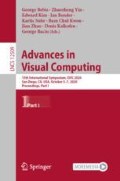Abstract
There has been much interest in generating 3D shapes that are perceived to be “creative” and previous works develop tools that can be used to create shapes that may be considered “creative”. However, previous research either do not formally define what is a creative shape, or describe manually pre-defined methods or formulas to evaluate whether a shape is creative. In this paper, we develop a computational measure of 3D shape creativity by learning with raw data and without any pre-defined conception of creativity. We first collect various types of data on the human perception of 3D shape creativity. We then analyze the data to gain insights on what makes a shape creative, show results of our learned measure, and discuss some applications.
Manfred Lau acknowledges the Hong Kong Research Grants Council (General Research Fund numbers 11206319 and 11205420).
Access this chapter
Tax calculation will be finalised at checkout
Purchases are for personal use only
References
Chang, A.X., et al.: ShapeNet: an information-rich 3D model repository. CoRR (2015)
Chapelle, O., Keerthi, S.: Efficient algorithms for ranking with SVMs. Inf. Retrieval J. 13(3), 201–215 (2010)
Chaudhuri, S., Koltun, V.: Data-driven suggestions for creativity support in 3D modeling. ACM Trans. Graph. 29(6), 1–10 (2010)
Chen, X., Golovinskiy, A., Funkhouser, T.: A benchmark for 3D mesh segmentation. ACM Trans. Graph. 28(3), 1–12 (2009)
Cohen-Or, D., Zhang, H.: From inspired modeling to creative modeling. Vis. Comput. 32(1), 7–14 (2016)
Gal, R., Shamir, A., Cohen-Or, D.: Pose-oblivious shape signature. IEEE TVCG 13(2), 261–271 (2007)
Garces, E., Agarwala, A., Gutierrez, D., Hertzmann, A.: A similarity measure for illustration style. ACM Trans. Graph. 33(4), 1–9 (2014)
Guo, X., Lin, J., Xu, K., Jin, X.: Creature grammar for creative modeling of 3D monsters. Graph. Models 76(5), 376–389 (2014)
Liu, T., Hertzmann, A., Li, W., Funkhouser, T.: Style compatibility for 3D furniture models. ACM Trans. Graph. 34(4), 1–9 (2015)
Lun, Z., Kalogerakis, E., Sheffer, A.: Elements of style: learning perceptual shape style similarity. ACM Trans. Graph. 34(4), 1–14 (2015)
O’Donovan, P., Libeks, J., Agarwala, A., Hertzmann, A.: Exploratory font selection using crowdsourced attributes. ACM Trans. Graph. 33(4), 1–9 (2014)
Osada, R., Funkhouser, T., Chazelle, B., Dobkin, D.: Matching 3D models with shape distributions. In: SMI, pp. 154–166 (2001)
Ranaweera, W., Chilana, P., Cohen-Or, D., Zhang, H.: ExquiMo: an exquisite corpse tool for collaborative 3D shape design. J. Comput. Sci. Technol. 32(6), 1138–1149 (2017)
Sternberg, R.: Handbook of Creativity. Cambridge University Press, Cambridge (1999)
Su, H., Maji, S., Kalogerakis, E., Learned-Miller, E.: Multi-view convolutional neural networks for 3D shape recognition. In: ICCV (2015)
Surazhsky, T., Magid, E., Soldea, O., Elber, G., Rivlin, E.: A comparison of gaussian and mean curvatures estimation methods on triangular meshes. In: ICRA (2003)
Talton, J.O., Gibson, D., Yang, L., Hanrahan, P., Koltun, V.: Exploratory modeling with collaborative design spaces. ACM Trans. Graph. 28(5), 1–10 (2009)
Xu, K., Kim, V.G., Huang, Q., Kalogerakis, E.: Data-driven shape analysis and processing. Comput. Graph. Forum 36(1), 101–132 (2017)
Xu, K., Zhang, H., Cohen-Or, D., Chen, B.: Fit and diverse: set evolution for inspiring 3D shape galleries. ACM Trans. Graph. 31(4), 1–10 (2012)
Author information
Authors and Affiliations
Corresponding author
Editor information
Editors and Affiliations
Rights and permissions
Copyright information
© 2020 Springer Nature Switzerland AG
About this paper
Cite this paper
Lau, M., Power, L. (2020). A Data-Driven Creativity Measure for 3D Shapes. In: Bebis, G., et al. Advances in Visual Computing. ISVC 2020. Lecture Notes in Computer Science(), vol 12509. Springer, Cham. https://doi.org/10.1007/978-3-030-64556-4_47
Download citation
DOI: https://doi.org/10.1007/978-3-030-64556-4_47
Published:
Publisher Name: Springer, Cham
Print ISBN: 978-3-030-64555-7
Online ISBN: 978-3-030-64556-4
eBook Packages: Computer ScienceComputer Science (R0)

